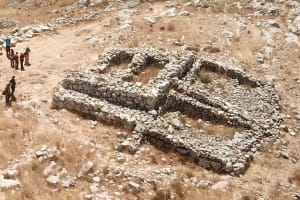US joins pressure campaign on Israel to allow foreign media free access to Gaza – report
Israel prepares for 'tsunami' of new propaganda campaign once journalists enter

The Trump administration has joined the ongoing campaign to pressure Israel to end its policy of preventing foreign journalists’ entry into the Gaza Strip, the Times of Israel reported on Monday, citing two U.S. officials.
One official, however, acknowledged that the issue is not of pressing concern to the administration, indicating that the U.S. will not exert its full pressure on the matter.
President Donald Trump already mentioned in August that he would like to see journalists entering the enclave.
The new request by the U.S. followed the ceasefire that began on Oct. 10 and resulted in the effective partitioning of Gaza into two parts. The Israeli-controlled part east of the Yellow Line is now ostensibly safe for journalists.
Israel’s policy of not allowing free media access to Gaza has been under continuing criticism since the start of the war, and the Foreign Press Association filed a petition against it at the High Court in 2024.
The government argues that the area is not safe, and that the journalists’ entry would put them as well as Israeli troops at risk.
The only way journalists have entered the Gaza Strip was as of part short, IDF-approved and organized trips, embedded among Israeli troops.
In July, French Foreign Minister Jean-Noel Barrot publicly called on the Israeli government to permit international media representatives to enter Gaza, and Israel’s Foreign Press Association has issued several petitions to the Supreme Court over the issue.
In August, both Trump and Prime Minister Benjamin Netanyahu spoke on the issue. Netanyahu said during a press conference that he had directed the IDF to allow foreign journalists into Gaza while working to ensure their safety, adding that the instruction hadn’t been carried out yet.
Trump told reporters he would “like to see that happen,” but added, “It’s a very dangerous position to be in if you’re a journalist.”
Several recent reports indicate that the Israeli government is preparing to lift the ban. The State Prosecutor’s Office told the High Court, during the most recent hearing on the FPA petition, that Israeli and foreign journalists would soon be allowed to enter Gaza up to the ceasefire line.
At the hearing two weeks ago, the High Court gave the government until November 23, 2025 to update its position on the entry of journalists, pointing to the fact that conditions on the ground were now substantially different than those during its previous response issued in June 2024.
At the time, the court’s ruling stated that the IDF’s restrictions were justified as journalists could reveal operational details like troop locations, and endanger them.
The FPA argues that the blanket ban “contravenes the foundational principles of the state as a democratic country, and represents a severe, unreasonable and disproportionate injury to the freedom of the press, freedom of expression, and freedom of employment for journalists and the right to information.”
The FPA filed its first petition in December 2023, but the court refused to discuss it after accepting the state’s position.
In October, Ynet News reported that the IDF and the Foreign Ministry are preparing for the potential information and diplomatic fallout from the free entry of journalists into Gaza, many of whom presumably have anti-Israeli biases.
Officials involved in public diplomacy said that Israel expects Hamas to exploit the situation for new propaganda campaigns, trying to accuse Israel of war crimes against the background of new coverage of the widespread destruction in Gaza and personal stories of civilians.
A senior official told the outlet, “The destruction in Gaza provides fertile ground for campaigns that will also fuel protests abroad. We must clearly show that Gaza was a terrorist state. For 20 years, Hamas built terror infrastructure atop civilian infrastructure – schools, mosques, residential buildings. The IDF and Military Intelligence are working hard to locate and document incriminating materials for use in public diplomacy. We need mostly visual materials. When taking journalists on tours, we must explain what was here – here was a tunnel shaft, there a hostage was held.”
The IDF Spokesperson’s Unit recently convened representatives of various communication and public diplomacy bodies, including Foreign Ministry Director-General Eden Bartal and members of the National Public Diplomacy Directorate, to discuss the issue.
“This is without a doubt one of the main focuses for all branches of the system,” said a senior public diplomacy official.
“There’s an ongoing effort to prepare explanatory materials – particularly incriminating evidence – to show that Hamas built a terror state in Gaza, cynically using civilians and civilian infrastructure.”
Other officials added, “This is the first time foreign crews will enter Gaza and go building to building, telling difficult stories. We’re preparing for all kinds of scenarios. The working assumption is that the information will be filtered through sources seeking to dramatize events against Israel, using the destruction as a backdrop. They’ll see the devastation and point fingers at who they believe is to blame. But Israel’s message is focused: the responsibility lies with Hamas. Under international law, that’s legitimate – it just doesn’t look good on camera. Hamas hid beneath schools and hospitals. It was the only way to reach the terrorists. Any other country would have done the same – or worse.”
Another official warned that the government hasn’t done enough to prepare: “What hasn’t been told yet are the personal stories from Gaza – in the voices and images of the residents themselves. That’s what journalists will do now, and there’s little we can do to counter that. Before, we could say, ‘Return the hostages, and we’ll end the war.’ Now the hostages are home, the war is over. This is the aftershock – like a tsunami. We just need to keep our heads down and let the wave pass.”
“Right now, Israel’s public diplomacy apparatus is paralyzed – and those responsible for it at the Foreign Ministry are still fighting the last war,” said another official.
“Sadly, it’s a public diplomacy failure of both wars – the one that just ended, and the one that’s about to begin.”

The All Israel News Staff is a team of journalists in Israel.
You might also like to read this:















